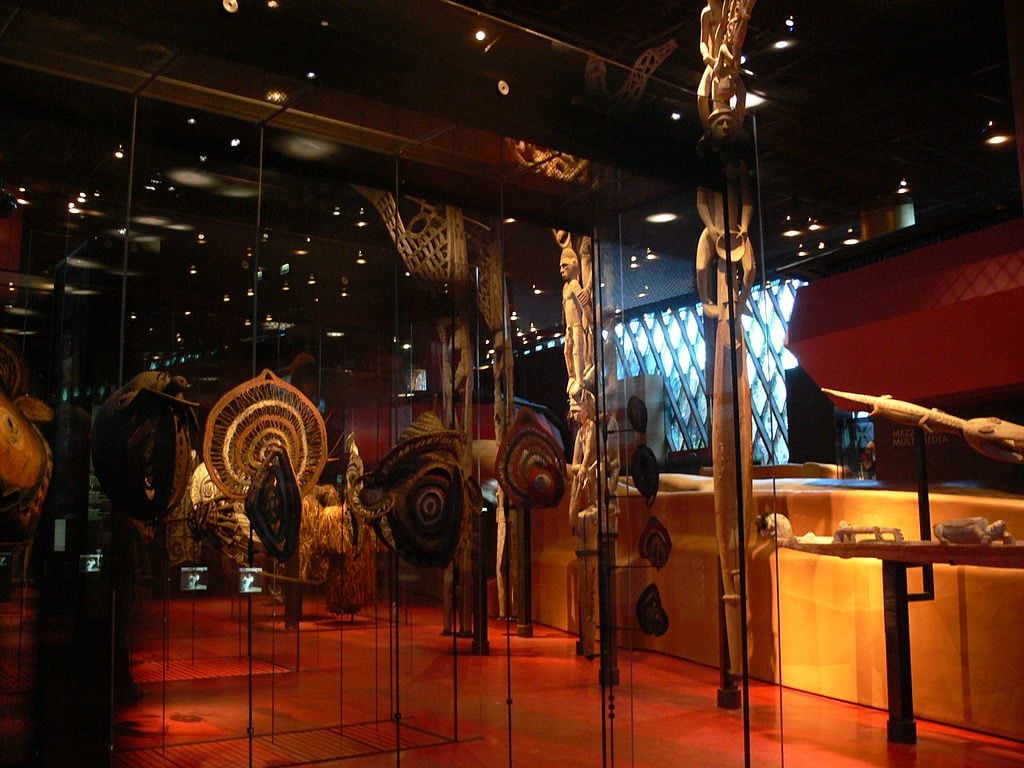Five protesters were arrested after attempting to seize an African funerary object from Paris’s Musée du Quai Branly-Jacques Chirac with the hopes of returning it to Africa.
While the museum was open on Friday, the protesters made a 30-minute video documenting the theft, which was later uploaded online. “The names at the entrance of this museum are the names of colonizers who pillaged the art that is now here,” said the activist Mwazulu Diyabanza in the video, before grabbing the 19th-century wooden ritual pole object from its stand. “These items were pillaged between 1880 and 1960 under colonialism.”
The five activists were released from jail this weekend after community mobilization, according to posts on social media. A video posted online shows Dyabanza greeted with cheers and applause after exiting the police station. Diyanbanza, who is from Congo, says he is not allowed to leave France until his trial and is not permitted on the premises of the museum again.
In a statement to the press, culture minister Franck Riester condemned the act with “utmost firmness,” saying that actions such as these “damage” cultural heritage.
“While the debate on the restitution of works from the African continent is perfectly legitimate, it can in no way justify this type of action,” Riester said. “The work does not appear to have suffered any significant deterioration and the museum will take immediate action to carry out any necessary restoration work.”
The incident in Paris comes amid a wave of global protests denouncing racism after the death of George Floyd in the US at the end of May. Europe has seen widespread protests and attacks on colonial monuments in the UK and Belgium too.
According to a GoFundMe drive organized for Diyanbanza and the others who assisted him at the museum, members of the group face up to seven years in prison and a fine of €100,000. Their trial takes place September.
“We expected this,” Diyanbanza says in the video after leaving jail, adding that it is a fight that continues in Berlin, Switzerland, and London. “These goods and the money accrued during their exhibition must be returned.”
“This act is the trigger for other powerful actions for the restitution of our stolen, looted and plundered goods,” Diyanbanza told Artnet News. “We are risking a lot, but what is this risk worth in the face of the corpses of women, children, young and old massacred before their deaths!”
The museum filed a complaint with the police and an investigation is underway, according to the ministry. The museum did not respond to a request for comment.
The museum’s new director, Emmanuel Kasarhérou, who is of French and Melanesian descent, has the unique challenge of figuring out how to honor President Emmanuel Macron’s 2017 statement that the country would return cultural heritage to sub-Saharan Africa, which came after a landmark report urged France to take dramatic steps toward restitution. The Quai Branly holds at least 70,000 objects from that region alone; 66 percent of them entered the museum during the colonial era.
Since Macron’s statement, one object from the Quai Branly, a 19th-century saber seized from modern-day Mali, has been returned. The government also said the museum would return 26 looted artifacts to Benin by 2021. In a recent interview with the New York Times, Kasarhérou described the report as “very militant.”
“Western museology was born in the 19th century,” said a co-author of the report, Felwine Sarr, in a video interview. “It was a concept made for these objects.” Sarr added that the objects should be “resocialized” into African communities, including into schools, art venues, and research centers.
During the filming at the museum, Diyabanza noted that he paid €12 to enter the museum. “We did the calculation to see how much money our artworks generated for this museum” and the profits generated by the museum is into the billions, he said. “Today, we are recuperating what is ours.”









